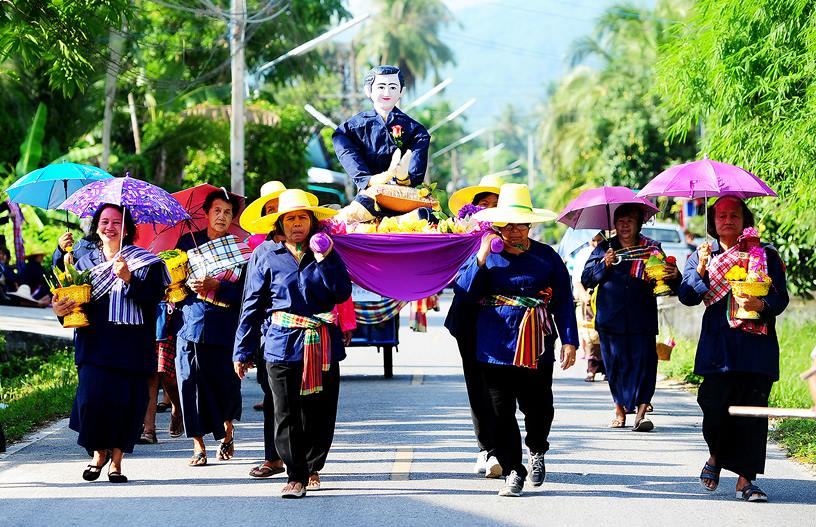The Lamsang (Lasang) Tradition

Rating: 5/5 (1 votes)
Narathiwat attractions
Attractions in Thailand
The Lamsang (Lasang) Thai Tradition of Buddhists in Tak Bai District, Narathiwat, is a significant local custom that reflects the lifestyle and beliefs of the villagers in the area. This tradition is deeply connected to agriculture and the belief in Mae Phosop, the goddess of rice, revered by farmers. It is believed that the Lamsang ceremony will bring prosperity, abundant crops, and ensure successful rice harvests in the coming year, thus fostering the well-being of the community.
Origins and Beliefs Related to Mae Phosop The Lamsang tradition stems from the Buddhist belief in worshipping Mae Phosop, the goddess who oversees the fertility of rice fields. As agriculture plays a crucial role in the villagers' daily lives, the belief in Mae Phosop becomes an essential part of their existence. The Lamsang ceremony is held to give thanks to Mae Phosop after the rice harvest and to pray for prosperity in the next planting season. The ritual is intended to ensure a bountiful harvest and a successful yield in the coming year.
Preparations Before Lamsang Day Preparations for the Lamsang ceremony begin once the rice harvest is complete. The community leader or village elders will choose a suitable day for the event. Villagers then begin their preparations, focusing on making kanom jeen (fermented rice noodles), which plays a significant role in the ritual. The community gathers at a venue, usually a wide open space in the middle of the rice fields, where the ceremony is to be held. A pavilion is often set up in the field to host the event and various activities.
Rituals on Lamsang Day On Lamsang Day, villagers gather in the open field to start the main rituals. The kanom jeen prepared beforehand is offered to the monks as part of a merit-making ceremony for the community’s good fortune. After the monks are served, the villagers share a meal of kanom jeen together, symbolizing unity and communal harmony. Sharing food in this way reflects the close bonds within the community.
The Lamsang tradition is not only a religious ritual reflecting the villagers’ faith but also an important occasion for strengthening community ties. This ceremony allows everyone in the community to participate, from the initial preparations to the actual ritual. Hosting the ceremony in a natural setting, such as the rice fields, also demonstrates respect and a deep connection to the environment, which is central to the villagers' daily lives.
Kanom jeen, used in the ritual, holds symbolic meaning as well. It represents fertility and growth, much like the rice in the fields. It is also a food that connects with the community’s eating culture, playing a significant role in various traditional events in Southern Thailand.
The Lamsang tradition of Buddhists in Tak Bai District, Narathiwat, embodies beliefs tied to agricultural prosperity and respect for nature. This ceremony not only reflects the faith in Mae Phosop but also strengthens the close-knit relationships within the community. Preserving and passing on the Lamsang tradition is crucial to ensure that future generations can learn and appreciate the deep cultural significance that it holds for the local community.
Comment
| Keyword (Advance) |
 Region
Region
|

 Category:
Category:  Group:
Group: